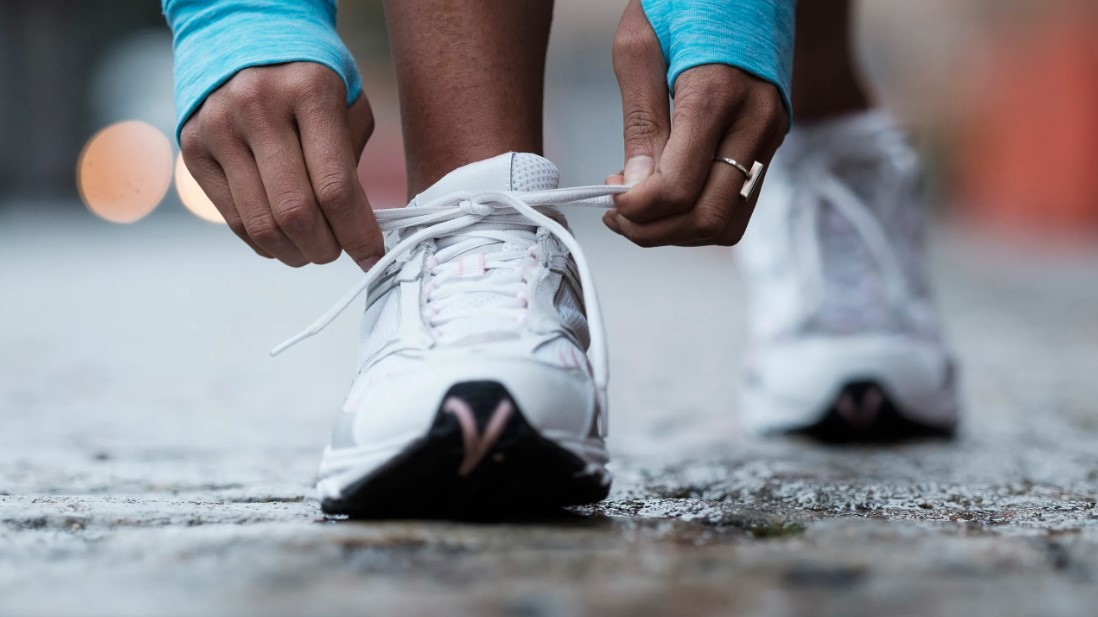Are Fitness Trackers as Beneficial as Marketers Claim?
Fitness trackers were created for professional athletes, but today they are worn by all sorts of people, from schoolchildren to billionaires. Can these gadgets fulfill all the promises of their developers? Let’s find out how fitness trackers work, should we trust their measurements, and can they be harmful to our physical and mental health?
Types of Fitness Trackers
Activity trackers are small wearable devices that measure basic indicators of a human’s physical condition. The progenitors of modern fitness gadgets appeared in the 19th century. For example, in 1895, engineer Curtis H. Veeder created a “cyclometer” for cyclists: this device counted the bicycle wheel rotations and converted them into miles. The first fitness trackers in the modern sense can be considered wireless heart rate monitors (pulsometers), invented in the early 1980s for Finnish athletes and skiers. Pedometer and pulsometer – the minimum set of functions of most modern gadgets. However, they also have additional features: based on the data collected, the tracker can calculate how many calories you spent during the day and assess the quality of your sleep. In addition, some manufacturers claim that their devices can also evaluate stress levels.
The most common type of fitness trackers today are bracelets, which can be worn on the wrist. But, building an activity meter into almost any object attached to the body is possible. Nowadays, we can face gadgets like rings, pendants, underwear stickers, and even shoe insoles. In principle, fitness trackers can also be called smartphone apps, counting the number of steps, recording the jogging routes, or keeping a workout diary.
The fitness tracker trend is connected to increased interest in wearable devices. Analysts at CCS Insight noted that the market for such gadgets is growing yearly. In 2018, manufacturers sold 121 million wearable devices, of which 74 million (about 60%) were smartwatches and fitness trackers. In 2020, the fitness tracker market was estimated at approximately $19670 million and is expected to expand at more than 15.4% CAGR and is predicted to reach $54190 million during the forecast period of 2022-2026. Meanwhile, CCS Insight estimates that bracelet sales will decline over time since many types of physical monitoring will also be available in smartwatches.
Features of the Modern Fitness Bracelets?
Elementary activity tracking is the calculation of the distance you have passed. Again, you don’t need a particular device for this, just a pedometer app that uses the smartphone’s built-in accelerometer.
Another essential function, pulse measurement, was introduced thanks to photoplethysmography technology. With its help, you can monitor blood flow by observing how the volume of blood vessels changes. To do so, the tracker transmits light through the skin using a small LED on the surface of the gadget against the skin. Then the optical sensor records how much light the body tissues and blood absorbed and how much was reflected. The blood absorbs light more intensely than the surrounding tissue. Therefore, when a vessel expands and contracts due to heart contractions, the amount of light reflected from the skin also changes. Based on these fluctuations, the tracker can calculate the changes in your heart rate during physical activity.
Fitness trackers also track daily energy expenditure, a feature that comes in handy for those who count consumed and spent calories. First, the app compatible with the bracelet calculates your basal metabolic rate. Your basal metabolic rate is the minimum amount of energy you need to stay alive in the conditions you’re used to.
It is enough energy to keep your body temperature well below the normal 36.6° C and to allow all of your major body systems to work without interruption, ensuring breathing, blood circulation, chemical reactions in cells, and constant hormone synthesis. To calculate this figure, it is enough to know a person’s age, sex, weight, and height. Then, add the number of calories “burned” during walking, jogging, and training to the basic metabolic rate. This parameter is also calculated approximately – we will return to the measurement accuracy problem later.
Another significant sensor of modern trackers is a thermometer. It will help you spot unusual temperature increases in time: for instance, the temperature may rise if your workout is too intense.
Some trackers also claim to monitor your sleep quality using the device responsible for step measurement – the built-in accelerometer. The movement pattern lets people know how much time they spend sleeping, how often they wake up, and whether they can fall asleep again quickly after awakening.
Stress level control is a feature that raises many questions among potential fitness bracelets customers. But how does the gadget read the body’s reaction to increased stress, including psychological stress? Usually, one of the main sensors in a bracelet handles the “stress monitoring” – the heart rate monitor. With its help, the tracker measures the degree of heart rate variability. The interval between two heartbeats varies slightly from cycle to cycle. Low variability, meaning uniform intervals between beats, can indicate a high load on the heart and blood vessels.
Some studies have associated low heart rate variability with an increased risk of diseases in these organs and increased mortality.
Also, a low index can indicate that the body is in a “fight-or-flight” response: the body mobilizes to get rid of the threat as quickly as possible. This reaction can save a life in an emergency but can also be triggered by unpleasant but not dangerous events, such as a work-related conflict. The more often such a reaction occurs, the harsher it exhausts the body, and the inability to rest correctly immediately after the trouble exacerbates the problem. Such stress does not help you adapt to new things but, on the contrary, only harms you.
Why do We Need Constant Activity Tracking?
The first wearable trackers were created for professional athletes – they tracked heart rate and other indicators to help better calculate workouts. However, today the situation has changed: many of those who wear fitness trackers are far from being athletes.
More often, such accessories are purchased by people who lead mostly sedentary lifestyles. They aim to find out how long they spend immobile and therefore take their first steps toward the sport. For example, participants in a small Australian study were likelier to start wearing a tracker to get a more accurate picture of their activity and improve physical shape and health. Other motives say a desire to look better or a passion for new technologies, were far less common.
Lack of physical activity is indeed considered dangerous. Many studies connect sedentary lifestyles to an increased risk of obesity, heart and vascular disease, or type 2 diabetes. The psyche also suffers from a sedentary lifestyle: those who spend their days at a desk, and evenings on the couch, more often risk facing depression.
Hypodynamia has many causes. People work and rest sitting more often: who at least once has not spent a weekend watching soap operas? The entertainment industry is eager to take advantage of this: the streaming service Netflix has released all episodes of new shows on the same day since 2013. Sixty-one percent of participants in a survey conducted by the service admitted that they regularly watch several episodes consecutively. Another problem, the WHO states, is the infrastructure of many cities. Sometimes residents simply have no place to go: no parks and squares, and somewhere there is even a lack of convenient sidewalks – you can only move around conveniently by car.
However, if all conditions for walking and training are arranged, occasionally, we do not want to get up from the couch. That’s the case when a fitness tracker comes to the rescue.
Studies show that regular monitoring of your activity helps you lead a healthier lifestyle, including more physical activity.
With a fitness gadget, monitoring your habits becomes much easier – your actions are recorded automatically. On top of that, trackers allow you to turn everyday life into a game: developers constantly look for new ways to gamify daily tasks.
What’s Wrong with Fitness Trackers?
One of the main complaints about activity trackers available to the average user concerns the accuracy of their measurements. Bracelets handle step counting quite well, but the more complex functions, including the heart rate monitor, are challenging.
Many bracelet manufacturers, like Fitbit and Garmin, warn customers that such accessories should not be used as medical devices.
But sometimes, the accuracy of the devices isn’t enough, even for domestic use. In 2018, a California court heard a class-action lawsuit filed by Fitbit bracelet buyers: the plaintiffs claimed that the gadgets were highly inaccurate and often failed to measure heart rate. However, their claim was rejected.
Sometimes the low accuracy is a consequence of the fitness bracelet design. For example, the light signal to measure the heart rate is too weak: the interference caused by movement is much stronger and often drowns it out. Also, to get more accurate results, the app algorithms may not consider the data recorded during an active workout (and this is precisely the most exciting part!).
Inaccurate heart rate measurement is even possible while walking, a team of scientists from the UK, Portugal, and Georgia has convinced it. The participants of this experiment wore four identical fitness bracelets – two on each wrist – and received four significantly different results after “walking” on a treadmill.
Tracker manufacturers often position them as tools to help change lifestyles and achieve specific goals. But, alas, studies show that such devices do not always work. In 2016, scientists summed up the results of an experiment involving about 800 residents of Singapore. Volunteers wore a pendant tracker for a year.
It turned out that they devoted half an hour more to physical activity per week than people in the control group. However, it did not affect their health: their body weight and blood pressure indicators had not changed on average a year later.
So why didn’t the trackers work, despite the marketers’ promises? Scientists from Singapore correctly point out that gadgets can only track activity but do not always motivate people to increase their physical activity. Furthermore, many participants stopped wearing the accessory quite quickly – perhaps the tracker simply annoyed them.
Sometimes the tracker even plays a cruel joke with users, forcing them to move less actively than before using the gadget. Participants in popular health challenges sometimes fall into such a trap, striving to walk a particular number of daily steps. Some reported that they gave up intense but short jogs or workouts at the gym in favor of long walks to please themselves with higher pedometer numbers. But studies show that relatively intense cardio exercise reduces the risk of heart and vascular disease, so don’t neglect it.
How can Activity Trackers Affect Mental Health?
Some psychologists suggest using activity trackers can harm people with certain mental disorders. Most often, activity trackers are mentioned when talking about eating disorders. One manifestation of such conditions is the urge to stick with a strict low-calorie diet and an exhausting workout schedule; perhaps monitoring can exacerbate that desire.
In 2018, researchers at Loughborough University in Britain interviewed about 350 people. Those who actively used fitness trackers or food monitoring apps scored higher on the Compulsive Exercise Test and the Eating Disorders Examination Questionnaire. In addition, the more often a respondent used a tracker, the higher their average risk scores were.
According to researcher Caroline Plato, this does not mean that activity meters cause mental problems directly: the interaction of multiple causes usually leads to the development of the disorder. For example, careful control of diet and movement can harm people at high risk.
Overreliance on track can also ruin sleep. In 2017, U.S. scientists reported that in recent years, somnologists have often been approached by people concerned that their tracker has negatively “rated” their sleep quality.
Some continue to worry even though methods with proven efficacy (such as polysomnography) show that there is nothing wrong with their sleep. Researchers have suggested calling this condition orthosomnia by analogy with orthorexia (the compulsive desire for healthy eating.)
We can sum up that the fitness bracelet is a promising but not yet perfect tool to learn more about your health and physical shape. However, technology is developing rapidly, and perhaps, in a few years, wearable devices will become more accurate and effective.
For premium readers







